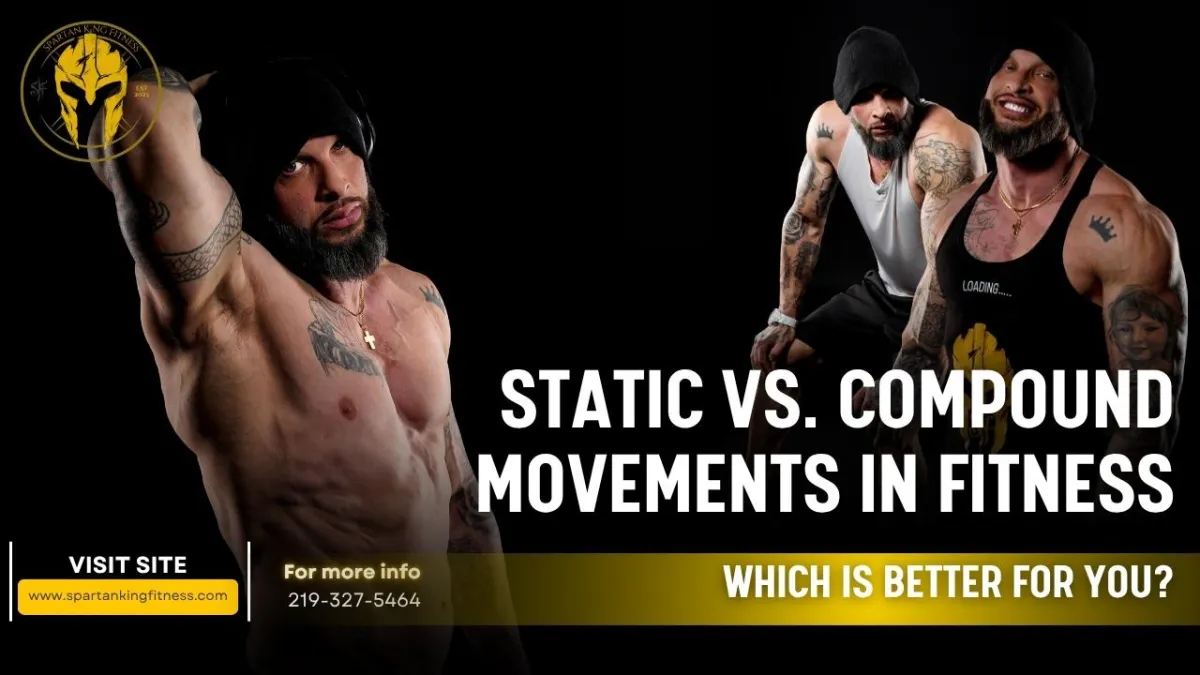BLOGS

Static vs. Compound Movements in Fitness: Which Is Better for You?
“It’s not about choosing one. It’s about knowing when to use both.” - Spartan King Fitness

In the world of fitness, not all exercises are created equal. Some movements are dynamic and explosive, others slow and controlled. Among the many classifications, two of the most commonly discussed are static (isometric) and compound movements.
Understanding the difference between the two — and when to use them — can significantly enhance your workout routine, improve results, and help prevent injury.
💪 What Are Static Movements?
Static movements, also known as isometric exercises, involve holding a position without changing the length of the muscle or moving the joint. Your muscles are under tension, but there’s no movement.
Classic examples include:
Wall sits
Planks
Static lunges (holding the lunge position)
Isometric bicep holds
✅ Benefits of Static Movements:
Increased Muscle Endurance: Holding a position under tension can improve your ability to sustain effort for longer periods.
Joint Stabilization: Isometrics train your stabilizing muscles, which is essential for joint health and injury prevention.
Minimal Equipment Required: Static exercises can be done anywhere, making them perfect for home workouts.
Rehabilitation Friendly: These exercises are often used in physical therapy to rebuild strength without stressing injured joints.
🏋️♂️ What Are Compound Movements?
Compound movements involve multiple joints and muscle groups working together through a full range of motion. These exercises are typically more dynamic and are a staple in strength training.
Examples include:
Squats
Deadlifts
Pull-ups
Bench press
Rows
🔥 Benefits of Compound Movements:
Functional Strength: These exercises mimic real-world movements, building strength that transfers to daily life.
Time Efficiency: You work several muscles at once, making your workouts more effective in less time.
Hormonal Boost: Compound lifts stimulate the release of anabolic hormones like testosterone and growth hormone.
Improved Coordination and Balance: By engaging multiple muscle groups, you train your body to move more cohesively.
🤔 Which Is Better?
The answer depends on your goals.
If you’re looking to build maximum strength, muscle mass, and overall athleticism, compound movements are king. They are efficient, challenging, and offer the most bang for your buck in terms of time and effort.
However, static movements shouldn’t be overlooked. They’re excellent for building endurance, stabilizing your joints, and adding variety to your workouts.
They can also help you break through plateaus in your compound lifts — try holding a plank to build core strength for better squats and deadlifts.
🏁 Final Verdict:
Compound movements are generally better for overall strength, hypertrophy, and athletic performance.
But incorporating static movements as a supplement can:
Improve your stability
Increase time under tension
Promote muscle control
💡 The smartest approach? Include both in a well-rounded training program.
Think of static and compound movements as two sides of the same coin—each valuable in its own right, but most powerful when used together.
🧠 Quick Tip for Your Routine:
Start with compound movements when your energy is high (e.g., squats, pull-ups).
Finish with static holds for burnout and added muscle engagement (e.g., plank or wall sit after leg day).
🚀 Want to Level Up Your Fitness?
Stay tuned for more evidence-based training insights, workout plans, and expert tips to make your time in the gym count. 💪
You’ve got goals. Let’s crush them — the smart way.


